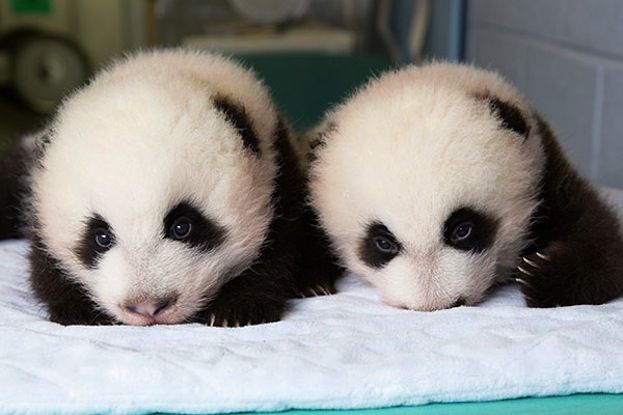100 Days! Twin Panda Cubs Get Names

The twin giant panda cubs born at Zoo Atlanta in July have reached their 100-day mark today (Oct. 23), and they now have names: Mei Lun (may loon) and Mei Huan (may hwaan), which originate from a Chinese idiom that translates to "something indescribably beautiful and magnificent."
Public voting began online on Oct. 9 and ended at 11:59 p.m. on Oct. 20, with voters choosing between five sets of names (including the chosen ones): Mei Lun (may loon) and Mei Hua (may hwaa), meaning "Lun Lun’s twin cubs born in the U.S;" Tian Lun (tee-an loon) and Tian Le (tee-an luh), a version of a Chinese idiom meaning "joy of family life" or "family happiness;" Lan Tian (lan tee-an) and Bi Shui (bee shway), meaning "blue sky and clear water;" and Da Lan (dah lan) and Xiao Lan (sheow lan), meaning "bigger one (Cub B) and smaller one (Cub A) of Atlanta-born twins."
The birth of the brothers on July 15 was a rarity, as the last time twin giant panda cubs were born and survived in the United States was 1987. The newly named cubs have three other brothers who call Lun Lun and Yang Yang mom and dad. [See Photos of the Twin Panda Cubs]
Why wait 100 days for monikers? Following a tradition in China in which human babies wait 100 days to receive names, U.S. zoos have done the same with giant panda cubs. In fact, all pandas technically belong to China and are on loan to foreign zoos.
This year, two U.S. zoos greeted baby pandas. In addition to Zoo Atlanta, the Smithsonian's National Zoo in Washington, D.C., welcomed a female newborn panda that has yet to be named. She was born to panda mom Mei Xiang on Aug. 23. That panda cub also had a twin, but it was stillborn. All three live cubs born in the United States this summer were the product of artificial insemination, after some attempts to get the adult panda couples to mate naturally failed.
Many conservationists maintain that captive breeding is a necessary way to study and preserve the endangered species. There are estimated to be just 1,600 giant pandas left in the wild, and the animals' natural habitat is limited to fragmented forest patches in mountainous parts of south-central China. Historically, the bears' range was much wider, extending into other parts of Southeast Asia, such as Burma and Vietnam.
The rare bears face threats like development and climate change. But in a sign of hope for the panda population, a new study out this week in the journal BioMed Central found that pandas in the wild actually have higher genetic diversity than previously thought. This means that the bears' wild population, though small, might be more resilient to changes in their environment than other endangered animals.
Sign up for the Live Science daily newsletter now
Get the world’s most fascinating discoveries delivered straight to your inbox.
Follow Megan Gannon on Twitter and Google+. Follow us @livescience, Facebook & Google+. Original article on LiveScience.











